How to Write a Great Short Story: 5 Key TipsDo you want to be a writer? A short story is an excellent place to start. I'll show you how to write a captivating one with these five key tips. Interested in writing a book? Download my FREE story-outlining guide. Short story tip #1 - Create a distinct protagonistLike a novel, a short story should have a main character. Even though you have much fewer pages for character development, you still need to do it. If your reader doesn't know the sort of person your protagonist is, connecting with that character can be difficult. However, you need to be efficient with your words. A novelist might spend seven pages describing all a character's hopes and fears, but you can't in a short story. You need to decide on the information you want to convey, then do so in as few words as possible. Express the following about your protagonist early on:
Short story tip #2 - Give your protagonist a serious problemYour story can open with your protagonist already in trouble. Or, you can open by showing them going about a typical day. If you pick the second option, that day should only be typical for a page, maybe two. You need to throw your protagonist into a conflict quickly. Make sure they have something to lose if the problem isn't solved - what's on the line is known as "the stakes." In a thriller story, the protagonist may lose his life if he doesn't solve his problem (ex, a serial killer targeting him). In a romance story, the protagonist's life may not be in jeopardy, but something else important should be (ex, her shot at a lasting relationship). Once you establish that something major is at stake, your reader should feel a connection with your lead. And once emotionally invested in the character, your reader should eagerly turn your pages to see how the problem turns out. Short story tip #3 - Stay focused on one problemIn novels, a protagonist may run into various problems. Supporting characters may confront their own dilemmas, which can play out over many chapters. Short stories don't offer enough room to properly address multiple conflicts. Make sure the conflict that arises from your hero's problem is a compelling one - then stay focused on that single conflict through the story, remaining in the POV of your lead. That being said, though you should concentrate on a single plot thread, that thread shouldn't be flat. You want to escalate your conflict - you want the challenge for your protagonist to seem increasingly harder. If possible, you even want to "raise the stakes," ie give your protagonist more to lose going into the climax than at the story's start. For example, let's look at the thriller story mentioned earlier, about a serial killer targeting a man. At the beginning, the man is with his friend, an off-duty police officer with a sidearm. Toward the middle of the story, the killer murders the cop. Now, the unarmed man is alone - defeating the killer has become a more difficult challenge. Just before the climax, the man finds out the killer plans to murder his wife after him. Now, more is at stake if the hero fails to defeat the villain. Not only will he die, his wife will too. Short story tip #4 - Create an air of mysteryYou don't need to explain the context of every story event to your reader. Not only does this eat up valuable page space, it takes away any mystery. Raising questions in the mind of your reader is good. You want to eventually provide the answers, but delaying them builds suspense. Along the way, you can drip bits of information. For instance, the serial-killer story may open with two men in suits running through the woods. Your reader will wonder why they're doing this. You don't have to explain that they're running from a serial killer (even though they are). Possibly, you can show one of the guys tripping over a log. The other panics. While he helps up his friend, he says, "Hurry, I see him coming." Now your reader knows they're running from a man (you've dripped some information). However, your reader doesn't know who this man is (you've raised another question). A page or two later, you can reveal that their pursuer is wanted for fifteen murders. Short story tip #5 - Put in a twist near the endA twist is a major reveal that pulls the story events in a drastically new direction. The key to writing a good twist is to subtly hint at the shocking truth through the story, while misdirecting the reader so the connection isn't made. In a short story, a good place for a twist is during the climax, directly before it, or directly after. In any case, it should occur toward the end. For instance, in the serial-killer story, during the climax, the reader may find out that the main character was responsible for sending the villain on the killing rampage. The main character is a surgeon who was medically careless during a procedure, causing his patient - the villain's wife - to die. After lying in court, the doctor, along with the help of his high-priced attorney, was found innocent of any crime. The death, coupled with the lack of justice, pushed the already-troubled villain into a darker place, which led to a rampage. Here's how to create an effective twist from these events... Through most of the story, you'd portray the doctor - the main character - as a sensitive, moral family man, while portraying the villain as an emotionless butcher. The masked villain wears a necklace with a ring on it. The police assume it's some ritualistic death symbol. During the climax, when the villain has the doctor cornered, the villain finally removes his mask. His eyes are filled with tears. Though he's definitely a murderer, he's not emotionless. The villain gives the doctor a phone and insists the doctor admit what he did to the police. The doctor confesses to medical malpractice and lying in court. Content with this admission, the villain sets down his gun. He clutches the ring around his necklace and tells the doctor it belonged to his wife. The police show up and take away both men. Want even more writing tips?
0 Comments
Personification Examples [Improve Your Writing]Learn the definition of personification and the different types, see various personification examples, and pick up some tips for adding this literary device to your writing for strong effect. Personification definitionPersonification refers to the depiction of human qualities in non-human items, such as buildings or animals. However, it can also refer to the depiction of a concept, like fear or perseverance, in the form of a human. Personification examplesIn narrative writing, when human characteristics are given to non-human items, writers often explicitly state these instances of personification. However, when humans embody a certain concept, writers often do not explicitly state the connection, but suggest it figuratively. 10 examples of stated personification
10 examples of non-stated, conceptual personification
Tips for adding personification to your writing1. Personifying non-human characters Non-human personification is critical for stories with non-human characters. In a fantasy story, for example, most of the characters might be animals. For an audience to identify with them, they should be given human qualities like the ability to talk. In a science fiction story that takes place in a different galaxy, all the characters might be aliens. Though these aliens may not look like humans, the writer should give them certain human qualities so the audience can identify with them. For instance, although most of these aliens may be seventy feet tall and have IQs of 850, they live in homes with families (just like humans) and bicker with family members (just like humans). 2. Personifying settings Settings are a great place to apply personification to create a human connection. For instance, let's say a character in an adventure story enters a dangerous jungle. A writer can elevate this scene by personifying the jungle. "Human vs. human" conflict is emotionally engaging. And though a jungle isn't a human, if it can feel like one, the conflict can become more vibrant... Ken takes his first step into the Bagana wilderness. The jungle's hot sun stares down at him. He looks for shade, but wherever he goes, the unforgiving sun finds him. When describing settings, as a general guideline, the amount of page space you dedicate to the description should be proportional to how important that setting is in your story. For example, if a character stops at a diner for a quick cup of coffee during a road trip, and that diner never appears in the story again, you shouldn't spend three pages describing the place. However, let's say you're telling a story about a seemingly law-abiding waitress who secretly deals drugs out of the diner where she works. Many of the scenes take place there. Going deep into the description of this diner, applying personification and other writing techniques, would be a good idea. 3. Personifying objects Like a setting, objects in a story can feel more vibrant if personified. Let's look at an example in an action story... Charles knows he's in trouble. He can hear his enemy's footsteps racing toward him from behind. Though Charles lost his gun, an old friend is still hanging around. His set of brass knuckles. While describing objects, follow the same guideline as settings - the amount of page space used to describe an object should be proportional to its importance in the story. A set of brass knuckles that plays a pivotal role in a fight scene could surely have a couple sentences of description, maybe even a couple paragraphs, while a stick of gum a character casually chews on may deserve just a couple words. 4. Personifying concepts When characters in a story represent concepts, the theme of a story can feel more palpable. A theme is the takeaway about life in general an audience would have after finishing a story. Since themes are abstractions about life, they involve concepts. Examples of story themes:
When certain characters in a story embody concepts related to the theme, the conflicts those characters go though can show the depth of the theme, and thus, make it more believable. For an example, let's look at this theme: Unresolved issues from the past can ruin the future. In this story, our main character will be Bill. He used to be a criminal. He went to prison for ten years. When he gets out, he decides to leave his life of crime behind and create a peaceful future for himself in the suburbs. There, he meets Sophia, a kind woman who has never committed a misdemeanor in her life. Bill views her as a potential wife - she represents "the future." A couple months into dating Sophia, Bill gets an unexpected visitor at his doorstep, Allen. Allen was Bill's old criminal associate, who feels he's owed $90,000 from a job they did over a decade ago. Bill doesn't believe Allen's justification, and even if he did, doesn't have $90,000 on hand. Allen, who represents "unresolved issues from the past," keeps antagonizing Bill. Sophia can't help but notice Bill's conflict with this angry stranger. To get revenge on Bill, Allen eventually targets Sophia. In the climax, she escapes death. However, even though Allen is arrested, Sophia has lost interest in marrying Bill. She decides to leave him. This idea of concept representation can be furthered with the development of motifs, which are recurring elements in your story that stand for ideas related to your theme. In the example above, story elements associated with Sophia can help you make points about the future. For instance, she could be renovating her and Bill's house, wanting to put a fresh, modern take on some of the old styles. Allen's appearance in their life causes so much stress Sophia becomes too distracted to continue with the project and puts it on hold. This plot event conceptually conveys the point, "Because of Allen, Sophia and Bill's relationship has stopped moving forward, and is stuck in the past." Want even more writing tips?You might also like my examples of other literary devices, such as alliteration examples, metaphor examples, and symbolism examples. Examples of Metaphors [Improve Your Writing]Learn the definition of a metaphor and the different types, see various examples of metaphors, and pick up some tips for adding them to your writing for strong effect. What is a metaphor?A metaphor is a literary device that says one thing is another, even though it's not. Though the two things aren't literally equal, their comparison is true in a figurative sense. Metaphors are often used to make a point in a vivid, exaggerated way. Examples of metaphorsHere are 10 examples of metaphors:
What are the different types of metaphors?Direct metaphorsDirect metaphors directly state that thing A is thing B. For example, "His kitchen" (thing A) "is" "a sauna" (thing B). Thing A and B are linked by a variation of the "be" verb, such as "is," "are," or "was." Implied metaphorsImplied metaphors compare thing A to thing B without specifically stating thing A. Instead, some characteristic of thing A is mentioned. For example, with "Just before our meeting, Lawrence detonated a bomb," thing B would be "a bomb." The metaphor is implying that thing A is some piece of information Lawrence mentioned concerning the meeting. Though "piece of information" is not in the sentence, the metaphor makes sense in an implied way. Abstract metaphorsAbstract metaphors compare thing A to thing B without specifically comparing the two things at all, but rather, making an association between them. You tend to find them in long-form stories, like novels or films. Consider the phrase "X is a metaphor for Y," which is often used to describe some part of a story. For instance, Pete getting lost in the woods is a metaphor for his career struggles. The writer does not have to explicitly state this connection. Instead, the writer can simply create a parallel between the two things, letting the audience make the connection. For example, the way Stanley behaves in the office during a confusing day can be similar to how he behaves in the woods. Sustained metaphorsSustained metaphors compare thing A to thing B, then extend the comparison over multiple sentences, paragraphs, or even an entire story. For example, with "Marissa is the queen of her suburban town," an extended metaphor could further depict Marisa as a queen in the following sentences, "She reigns over PTA meetings and cocktail parties. Any local woman who wants to be socially connected, must bow to her." What is the difference between a metaphor and a simile?These two writing tools are often mixed up. They are quite alike, but with a key difference. With a metaphor, you say that one thing is another. For instance, "his kitchen is a sauna." With a simile, you also compare one thing to another, however not as directly. You don't plainly say one is another, rather that it's similar to another. A word like "is" can still be used, however, a word such as "like" or "as" goes with it. Some examples of similes:
Tips for writing metaphorsIf you happen to be interested in narrative writing, such as writing a short story, novel, or screenplay, metaphors can be a very powerful technique. Here are three tips for applying them to narrative writing: 1. Use direct and implied metaphors for descriptions and dialogueA great description creates a vivid image in a reader's mind. However, if a writer eats up multiple pages describing a single character, place, object, etc, the motion of the story can come to a standstill. Readers may get bored, even if the language is colorful. A metaphor is a great tool for creating a vibrant description without using hundreds of words. Let's say thing A is a character in your story your audience hasn't yet met. If you choose something for thing B that your audience already understands, you can immediately give thing A characteristics of thing B. For example, if a character named Stanley has an odor problem, here's how you can get across that trait with a metaphor: Stanley sits next to me at the kitchen table. When he reaches for the salad bowl, the stench of a dumpster hits me. Metaphorical writing for dialogue enables characters to get across strong points quickly. For example, let's say a character, Fred, is considered a bad dancer. Here's how that could come out in dialogue: Jack, in the passenger seat, asks, "How was that club you and Fred went to last night?" "The place was all right," Al says. "But I had to keep my distance from him once he got out on the dance floor. I didn't want people to know I was friends with the guy." "I thought you two were cool?" "He's not a bad dude. But those dance moves. His feet are made of concrete." With dialogue, not only can a metaphor help describe a person or thing a character is talking about, but it can help characterize the one doing the talking. In just a few words, Al not only expresses Fred's bad dancing, but expresses his own sarcasm. 2. Use abstract, sustained metaphors for emotional impactAbstract, sustained metaphors can be used to add emotional depth to certain parts of your story. For instance, let's say a character, Ethan, has been struggling to mend a relationship with his rebellious son. No matter how hard Ethan tries, he can't seem to gain his son's attention. Panic grips Ethan. He comes to believe the relationship is over. The audience, who identifies with Ethan, is rooting for the relationship to be fixed. Ethan, still upset about his son, decides to take a swim in the ocean to relax. Unfortunately, he's caught in a bad current. No matter how hard he tries, he can't seem to win the fight against the water. Panic grips him. He comes to believe he's going to drown. The sense of panic connects his relationship with his son to the potential drowning. This connection is abstract - the writer doesn't explicitly state it on the page. Then, a stranger tosses Ethan a life preserver. Someone saving Ethan from drowning foreshadows that someone may enter his life and save the relationship between him and his son. The emotional impact of Ethan getting saved will be twofold - the audience will be happy he's alive, and hopeful he repairs his relationship with his son. 3. Avoid mixed metaphors and dead metaphorsA mixed metaphor compares thing A with thing B, then starts incorrectly associating characteristics with B. For example, "Her singing voice was velvet. The way she said the lyrics, knocked the audience out of their seats." "Her singing voice" (thing A) is first compared to "velvet" (thing B). However, something that "knocked the audience out of their seats" doesn't seem like velvet, which is soft. Though knocking the audience out of their seats can surely be associated with good singing, it is incorrectly associated with an already-established element of the metaphor, velvet. A dead metaphor is a cliche metaphor. Audiences have been exposed to them plenty of times. Instead of exposing them again, try to come up with a new way to make the same point. For instance, "He's a tyrant" has been used many times to describe a strict person. To describe a character with this trait, think of another metaphor. For example, "If his son missed a single chore, for the next two weeks, the kid's bedroom would be a max-security prison cell." Want more writing tips?You might also like my articles on alliteration examples, definition of personification, and symbolism in writing. Alliteration Examples [Improve Your Writing]Learn the definition of alliteration, see various alliteration examples, and pick up some tips for adding this literary device to your writing for strong effect. What is alliteration?Alliteration is the repetition of a consonant sound at the beginning of two or more close-together words, as in "big boat," with "b" the repeating sound. A repeating vowel sound doesn't form an alliteration. For example, "anticipated arrival" wouldn't qualify even though both words begin with the same "a" sound (FYI, the word pair is instead an example of another literary device, "assonance"). Alliteration examples for different soundsExamples of alliteration for "b"
Examples of alliteration for "c" (sound 1), "k," and "q"
Examples of alliteration for "ch"
Examples of alliteration for "d"
Examples of alliteration for "f" and "ph"
Examples of alliteration for "g" (sound 1)
Examples of alliteration for "h"
Examples of alliteration for "j" and "g" (sound 2)
Examples of alliteration for "l"
Examples of alliteration for "m"
Examples of alliteration for "n," "gn," and "kn"
Examples of alliteration for "p"
Examples of alliteration for "r" and "wr"
Examples of alliteration for "s" and "c" (sound 2)
Examples of alliteration for "sh"
Examples of alliteration for "t"
Examples of alliteration for "th"
Examples of alliteration for "v"
Examples of alliteration for "w"
Examples of alliteration for "y"
Examples of alliteration for "z"
Types of alliterationAlliteration's repeating sound can have one or more letters"Big boat" - which just repeats the single-lettered "b" sound - is an example of alliteration, while "showy ship" is as well, repeating a double-lettered sound, "sh." Alliteration's repeating sound can come from different letters"Colorful kite" is an alliteration because the same sound is repeated at the beginning of the words, even though that sound comes from a "c" in the first and a different letter, a "k," in the second. On the other hand, words with the same consonant at their starts don't always form an alliteration. As mentioned, alliteration is about the sound letters make, not the letters themselves. "That tornado" would not be considered an alliteration. Even though both words begin with "t," the letter is used to form different sounds in each. The words with alliteration's repeating sound don't need to be directly next to each other"Cook the cauliflower" is an example of alliteration even though the two words with the repeating sound - "cook" and "cauliflower" - aren't directly next to each other ("the" separates them). As long as the words with the repeating sound are somewhat close to each other, they form an alliteration. More than two words can have alliteration's repeating soundThough alliteration is common with pairs of words sharing a repeating sound, the sound can be repeated in a many more words as long as they're somewhat close to each other. "Riding a rusty rollercoaster is a ridiculous idea" is an example of four-word alliteration. Why is alliteration used? The human mind tries to find patterns in the world. So, when a person comes across close-together words beginning with the same sound, the mind may pay a bit closer attention to those words than others because it detects a pattern. Plus, since alliteration is based on sound, it can give writing a rhythmic, musical quality. Thus, it doesn't just draw attention to words, it draws attention to them in a pleasant way. How to use alliteration in your writingIf literary devices were food ingredients, alliteration would be sugar. Writers can add a bit of alliteration somewhere to get a reader's mind engaged in those words. However, if you dump too much sugar on something, it'll be too sweet. Somebody may take a few bites, but wouldn't want to finish. Alliteration works the same way. When it's used excessively, it draws so much attention to itself, it can pull the reader's mind away from the underlying message the words are trying to convey. If you're writing an advertising slogan with just three words, all of them starting with the same sound would probably be a good idea. However, if you're writing a chapter in a book and seventeen words in a row begin with the same sound (unironically), your reader probably won't finish your book. An example of effective alliteration in narrative writingNarrative writing is about storytelling, encompassing fiction (ex, a novel) and story-based non-fiction (ex, a biography). Narrative writing features the components dialogue and description, which can be good avenues for alliteration. Dialogue is the part of the story your characters say, while description is attributed to non-spoken parts. Let's look at this example: Howard sits on the couch and flips on the TV. His wife enters the den. She glares at him and heads upstairs. "Everything all right?" he asks. She keeps walking up the steps, without a reply. How can we enhance this segment of narrative writing with alliteration? As mentioned, you can use alliteration to draw attention to certain words. Since you should apply the device sparingly, you don't want to pick random words. You'd want to alliterate for a reason. For instance, you might want to choose words that play a strong role in a point you're making. The added attention can stress your point. In the example with Howard and his wife, her ignoring him - and him not knowing why - is the takeaway from the scene segment. Alliteration could be used to accentuate this takeaway. Here's a slightly revised version: Howard sits on the couch and flips on the TV. His wife enters the den. She glares at him and heads upstairs. "Everything all right?" he asks. She keeps walking up the steps, silent. Notice the difference? Notice the alliteration? At the very end, "steps, silent." The dash of alliteration highlights her silence, her key characteristic in the scene. Though you can use alliteration in dialogue, be careful how you do so. Good dialogue should be true to how a character would talk. Since most real-life people don't go out of their way to insert alliterations into their speech, neither should most characters. However, if a certain character in your story is grandiose, and speaking in alliterations is consistent with the character's personality, then go ahead and stay true to that. Want more writing tips?Download my FREE guide for outlining an awesome book or screenplay: You might also like my additional posts on literary devices, such as what a metaphor is and what personification is. The Ultimate Guide on How to Market a Book OnlineIf you want to learn how to market a book online, you've come to the right place. Uncover powerful tactics for BookTok, email marketing, cross-promos, and much more. What is online book marketing?Applying a variety of digital tools to reach your book's target readers online, getting them excited about your book, and encouraging them to order a copy. Here are your primary digital tools - click a link to jump to its section in the guide: Why get a writer website?If you're a writer, I highly recommend you create a website for yourself. It'll make you look professional, plus act as a hub for important information. To get started, you first need to do buy a domain name - they're not expensive (you can even get one for free)... How to get a domain name for a writer websiteYour domain name should be "your name," followed by ".com." For instance, you're currently on my writer website, which has a domain name of tedgaldi.com. I'd recommend you get your domain name ASAP before someone else out there with the same name as you buys it first. You can get a free domain name from Bluehost. The domain name is free if you also get a hosting package from them (which are very cheap, starting at just a couple bucks and change per month). Hosting refers to the servers and technical infrastructure that keep a website running. If you want a website, you must get a hosting package from somewhere. How to design a writer websiteOnce you have your domain name, you need to design your site. After you get a free domain and affordable hosting package from Bluehost, you can easily install a system called Wordpress to design your site. Though various website-builder services exist, Bluehost/Wordpress is a great combination of cost and flexibility. Though you don't need to know computer coding to use Wordpress, you do need to be comfortable with online templates. And you will need to put aside some time to work on the site. If you don't like building things online, or don't have the time, that's okay. My company, Galdi Media, can build a site for you. How much does a writer website cost?Pricing for Bluehost What to put on your writer websiteYou should make a page on your site for each of your books, with the following content:
Keep in mind, Amazon has separate versions of its website for the different countries it operates in. If someone clicks an Amazon link for a country they're not currently in, they'll run into issues ordering your book, for both Kindle and physical formats. So make sure you include local Amazon links for each country where you expect to sell copies. If you haven't yet published a book, learn how to launch a book. Also add the following:
You can of course add various other sections to your website, such as a blog or a collection of interview links. Example of an author websiteHaving a website is just the beginningJust having an author website isn't going to sell your books. Before readers decide to hand you money for a book, they need a sense of confidence it's going to be worth the price. Well-known writers like Stephen King don't have this problem. However, if you're a new author with just one book, you likely do have this problem. Here's where the second author marketing tool - an email list - comes into play. What is an author email list?Email addresses that readers voluntarily give an author, which the author can message at any time. An author email list is a very effective tool. You should start building your email list as early as possible, even before your first book is released. However, you're probably wondering, why would people give you their email addresses if they haven't read any of your books yet? Good question. There's a way around this... Build an author email list by giving something awayThe key to building an author email list is to give something away for free. This free item is often referred to as a reader magnet, mentioned earlier. If you're a screenwriter who's also a director, you can give out video clips vs. something to read. For instance, have you made a short film? You can provide a link to stream it in exchange for an email address. Possibly you already have a short film available online. Do you have any related bonus content you can offer the film's viewers in exchange for an email address? Example, an interview with you and/or the actors, or a deleted scene. What is a reader magnet?A digital item of value someone receives for free from an author in exchange for giving the author an email address. This digital item of value should be related to the book - or books - you're selling. For example, let's say you're a science fiction author who's almost done with your first novel. As mentioned, you want to start building your email list as early as possible, even before the novel is released. You can write a science fiction short story and offer it for free in exchange for an email address. The short story and novel are related because they're in the same genre. And since the short story is free, many people won't hesitate to check it out. If someone reads it and likes it, you're no longer a stranger in their mind. You're a quality science fiction writer. Now, when your science fiction novel eventually comes out, this reader may be interested in paying for it. How to set up an author email list and reader magnetFortunately, just like website building, platforms exist that make setup and maintenance easy. For email, I use a system called MailerLite. After you create an account on an email marketing platform like MailerLite, you should have access to templates for landing pages. These are pages people can visit to submit their email address in exchange for your reader magnet. You should be able to customize this landing page with text, images, etc, promoting your free offer. Check out the landing page I built on MailerLite for my reader magnet (a book called Lion on Fire): You can also use a tool like Hello Bar to capture email addresses from popups, sliders, bars, and other attention-grabbing graphics on your site. Regardless of how you're capturing email addresses, you want an email marketing platform with automation features. As soon as someone submits their email address on your landing page, your platform should automatically send that person an email (which you would pre-write) with a link to download your reader magnet. If your reader magnet is a digital document (ex, a PDF), you can simply create a link to it on Google Drive, which won't cost you anything, and put the link in this pre-written email. You can also use a system called BookFunnel to deliver reader magnets. It's particularly useful if your reader magnet is a longer-form file you'd expect people to read on a Kindle, iPad, or other e-reader (vs. simply reading on a computer or phone). BookFunnel isn't a replacement of an email marketing platform like MailerLite - it's a service you can use side by side. How much does an author email marketing platform cost?Email marketing systems tend to be free to start with, then grow in price as your email list grows in size. Below is the initial pricing for MailerLite - once you sign up over 1,000 subscribers, the prices go up. However, even over 1,000 subscribers, this platform is still very affordable. What emails should an author send to readers?As mentioned, you want an email marketing platform with automation capabilities, like MailerLite. You can pre-write emails and trigger them to go to readers based on certain conditions. The simplest condition is time. For example, one day after a reader signs up, they'd get email X. Three days after that, they'd get email Y. A week after that, they'd get email Z. You can layer in various additional triggers. For instance, a reader may only receive email Z if they clicked your link inside email Y. Regardless of the particular triggers you decide on, you should set up a sequence of emails that accomplishes the following:
Yes, you can use your email service to message your readers about many other things. But, you should start with a basic sequence like this. How to grow your email listAs you can see, once you have a reader's email address, you have a lot of opportunity for creating a connection with that reader and selling your books. However, you can only collect email addresses if people are downloading your reader magnet. Here's a great way to get plenty of downloads and email addresses... Author cross-promosWith an author cross-promo - sometimes referred to as a "newsletter swap" - you contact another author in your genre and suggest sending a link to that author's reader magnet to your email list, in exchange for that author doing the same for you. You would write a broadcast email to your list saying something like, "I want to introduce you to Sally Smith. Like me, she writes fast-paced adventure fiction. She's giving away a short story. To download your copy, go to this link..." This is a win-win-win. Since you and Sally Smith write in the same genre, both your audiences would likely be interested in what's being offered by the other. All your readers get something new for free. And you and Sally grow your email lists. So, how do you find other authors to approach for cross-promos? Amazon's "Also Bought" section is a great route. If you visit your author profile page on Amazon, you'll see a list of authors with readers who cross over with yours. For example:
Amazon tends to include authors on your list who have audiences about the same size as yours. By extension, these writers' email lists would be around the same size as yours (yes, there could be exceptions). You would simply email the writers on your list and ask if they're up for a cross-promo. The vast majority have email addresses listed on their websites.
Once you do a successful cross-promo with an author, referrals tend to happen. The other author may introduce you via email to a writer they've done a successful cross-promo with, while you'd do the same for them. The more cross-promos you do, the more referrals you'd be exposed to. As you can see, once you have a decent-sized email list, growing it isn't complicated. However, before you get there, you need to sign up your first subscriber... How to grow your email list from zeroIf you're a new, unknown author, how do you get people to even know your reader magnet landing page exists? Getting yourself known for free is a benefit of the third group of author marketing tools, social media accounts... Social media for writersSocial media accounts are free. You should create as many of them as you can. Some good social media platforms for writers:
These platforms let you create profiles, where you can add your photo, bio, and a link. For your link, authors tend to use the URL for their website homepage. You can then include a button on your homepage that directs people to your reader magnet landing page. That's the setup I have on the homepage of this site... In your bio, you should mention you're giving away something for free. Ex, "click my link for a free science fiction short story." However, simply including a link to your website in a social media profile isn't going to drive traffic to your site. You have to create posts on these platforms to generate awareness. If you're creating posts that resonate, people will start following you and a percentage of them will wind up visiting your site to grab your reader magnet. These social platforms are quite nuanced - you can't create the same type of posts for all of them and expect them to take off. And learning the ins and outs of all seven of these platforms may seem a bit challenging. You can start with just one, get the hang of it, then try a second, then a third, etc. In no way do you need to amass a huge following on all seven platforms to have an effective social media presence as a writer. Even if you have a good following on just one, you can drive a lot of traffic to your website and get a lot of people to sign up for your email list. Luckily, tools like Tailwind make creating, posting, and analyzing content across social media platforms easy. Here's an overview of each... Facebook for writersOn Facebook, you want to create a page for yourself as a writer, which is different than the personal profile you likely already have. Unlike other social platforms, such as TikTok, which can show your posts to many people who don't already know you, your Facebook posts generally only get shown to people who already follow you (paid posts are an exception to this, which we'll cover later on in this guide). So, Facebook tends to be a tool writers use to engage with their existing readers vs. finding new ones. Engaging with existing readers is really important. They're going to want to know about your upcoming releases and any price promotions you might be running. Facebook is a great place to update them. Add videos, photos, and text to posts. A beneficial feature of Facebook is that it allows you to include a link in any of your posts - you're not just permitted a single URL for your bio. So, if you create a post about Book A, you can include a direct link to Book A's page on your website, the same with Book B, etc. If you're a screenwriter, Facebook is a great place to feature clips from your movies and interviews with directors and actors. With Facebook, and all the other social platforms, posting frequently is helpful. If you could post both frequently and consistently, you'll get even better reach. Once you get used to posting, you can gradually increase your frequency. Twitter for writersLike Facebook, Twitter is a good avenue for updating and engaging with your existing audience. Though Twitter is known for short-text posts, you can also add photos and videos. Like Facebook, each post can have a link. If one of your posts happens to receive a fair amount of retweets, it could wind up in front of a large number of people who don't yet know who you are. If you're a screenwriter and you post a trailer to Twitter, it could potentially be shown to a lot of people. Twitter is also a good place to comment on movies that you didn't write. Discussing popular movies that others are talking about can help get your name out. TikTok for writersTikTok has grown dramatically in the book world. One of the platform's most popular hashtags, BookTok (#booktok), is tied to many billions of views. TikTok is for videos, particularly vertical videos that are short - many tend to be between 5 and 30 seconds. As mentioned, the platform is great for pushing an author's videos to people who don't yet know the author. On most other social platforms, the view count of a post significantly depends on how many followers the posting account has. Thus, accounts that are already popular tend to get a lot of views, while new accounts with small followings may hardly get any. The TikTok algorithm, however, operates under different rules. The algorithm can push a video to a lot of people as long as it believes many people will like it, even if the posting account has few followers, even none. So, how does the algorithm decide if many people will like a video? Though the particulars aren't known to the public, two key factors have been observed:
So, what specifically should a writer post on TikTok? If you're an author, make attention-grabbing videos about your books and/or your reader magnet. You can accomplish that in various ways. Here are a few:
YouTube for writersAs you probably know, YouTube is a platform for sharing videos. What you may not know is that a certain type of video format - known as a YouTube Short - has been gaining popularity. A YouTube Short behaves like a TikTok video - it's a brief (under 60 second), vertical video that's pushed out to an audience based on topic reach and watch time. A video you make for TikTok can be added to YouTube Shorts, and vice versa. YouTube is also a great avenue to share longer-form video content. Some types of longer videos writers posts are informational ones on topics related to what they write, interviews, and book and movie recommendations. If you're going to make longer-form video, you'll need editing software. I suggest you check out InVideo. Another effective tool for YouTube channel owners is VidIQ. This intelligence platform analyzes your existing videos and gives you recommendations for making new ones that could generate a lot of views. Instagram for writersThough Instagram is primarily known as a photo-sharing app, its video presence has been on the rise. Instagram has its own version of a short, vertical video, known as a Reel. View counts for Reels are based on the same two elements we've discussed: topic reach and watch time. Any video you make for TikTok, YouTube Shorts, or Instagram Reels can be added to the other platforms. So, if you like creating videos, the short, vertical format is helpful since the potential exposure of any video can be easily tripled. Pinterest for writersThough Pinterest does have video capabilities, it is primarily a site for posting photos. Each photo can be linked to a URL. Many users search for topics of interest on the platform with keywords. A recommended tactic is to put yourself in the shoes of your target reader or film watcher and think of phrases they may be searching for on Pinterest that are related to your reader magnet, books, or movies. You would then create relevant image posts on Pinterest around these topics, and include URLs to your reader magnet, books, or movies. This strategy tends to be a bit easier for non-fiction, whose books might directly relate to topics someone is searching for on a search engine. For example, if you wrote a non-fiction book about historical cities around the world, you could create photo posts of interesting places in those cities, with each post linking to the page on your author website dedicated to the book. When someone searches, for instance, for "Athens," your posts could come up. Goodreads for writersUnlike the other social networks discussed, Goodreads is specifically designed for books. In particular, users on Goodreads post reviews of books and join groups centered around genres they like. Though you can post photos, videos, text, and links on Goodreads, the platform is best for connecting with potential reviewers of your book. Like anything online, a product with a lot of reviews - especially good reviews - is sold more often. However, if you're a new author who doesn't have an existing fanbase waiting to read and review your next release, getting reviews may seem tricky. Here is where you can once again tap into the power of a free offer. A "read and review" - sometimes simply called a "read/review" - involves you giving a reader a free copy of your book in exchange for that reader writing a review of your book once they finish it. A good time to do this outreach is after your book is complete, yet prior to its official release. This version of your book is commonly referred to as an ARC, or "advanced review copy." You can collect early reviews, which could be posted on Goodreads, in addition to Amazon and other sites, by the time your book is released. So, how do you find these potential reviewers? As mentioned, Goodreads has many genre-specific groups. You can search for ones relevant to your books. Plenty of groups have sections in their discussion forums where authors can propose read and reviews to members. Another site - NetGalley - is also a good method for connecting with early reviewers. However, authors do have to pay a fee for access to this service. You can give away other writers' books tooGiving away a reader magnet you made can definitely get you some attention on social media. Another good tactic is to give away books by well-known authors in your genre. This may get you even more attention, however, you will need to pay for the prize books. You can use various platforms to create your own sweepstakes. People can enter for a chance to win by submitting an email address. After the sweepstakes ends, you'd be responsible for giving the randomly selected winner the prize books. Here's an example of a sweepstakes I put together: FYI, I created this event with a recommended system called KingSumo. Its technology handles the operational aspects of the giveaway, like email capture and randomized winner selection. Sweepstakes like this are great to promote on social media. You can include hashtags in your posts for the authors whose books you're giving away to attract their fans. Certain entrants who provide their email address may only be interested in winning the prize books vs. becoming subscribers of your email list. That's fine - make sure you give these people a simple way to unsubscribe. However, since you'll be selecting prize books in the same genres as the one you write in, many people who register for the sweepstakes will be happy to download your reader magnet and remain on your email list. First, solidify the foundation of your online author presenceWe've come to the final part of this guide, paid book ads. As the name implies, these tools involve you spending money. But you don't want to start spending money on ads until you have a solid foundation for your online author presence. Without a strong foundation, the money you spend on ads won't properly translate into book sales. To recap, here is what you need to establish a strong foundation:
Once you've gotten here, you should start evaluating paid ads. Like social platforms, you have many options, each with its own nuances. Below, find some marketing objectives you may want to accomplish, along with tips for getting there with ads... Grow your author email list with paid adsTwo recommended avenues for growing your email list with paid promotions are group giveaways and Facebook ads. Let's look at each... Group giveaways for authorsWe already covered sweepstakes that you can personally host, however, these aren't the only kind. Certain companies are dedicated to organizing and promoting group giveaways involving multiple authors, sometimes dozens. For a fee, anywhere from about $25-$50, you can be included in the giveaway. Here's how these online events work:
Two recommended companies: BookSweeps and AuthorsXP. Facebook ads for author reader magnetsAs we went over, Facebook lets you post content for free. However, it also offers paid posts. The more you pay, the more people see your post. One use of Facebook ads is promoting reader magnets. First, you want to register on Facebook Ads Manager. Once you do, and you're ready to create an ad, the following should go into it:
Creating your ad is only half of the process. Targeting the ad is the other half. Essentially, you need to tell Facebook who should see the ad. Facebook provides interest-based targeting - you can search for terms related to your genre, plus the names of well-known authors who write in your genre. Facebook will show the ad to people on its platform (this includes Instagram) who've expressed interest in the genre and/or a particular author. You can target the ad to multiple terms and writers. As long as the criteria is relevant to your reader magnet, you should try to address as large an audience as possible. The larger your addressable audience, the more opportunities the Facebook algorithm has to identify commonalities between people who click on your ad. As time passes, Facebook will learn to show the ad to people who are likely to click on it. Sell discounted books with paid adsA temporary discount is a great way to drive sales for a book over a short period of time. Generally, the lower the discount price, the higher the number of copies sold. With digital formats, such as Kindle, you can offer copies for as low as $0.99. Deal sites for book price promosSince many readers are on the lookout for e-book deals, various websites have emerged that aggregate daily discounts by genre, so readers don't have to spend time manually going through retail sites looking for price drops. Millions of people have signed up for these deal-aggregation platforms - every day, they can receive an email with links to download discount books in genre(s) of their choosing. As an author running a price promo, you can pay deal-aggregation platforms to feature your book in a daily email. Prices can range from around $30 all the way up to several hundred. Something important to be aware of: even if you're willing to pay the platform's fee, you're not guaranteed a spot in an email. Certain platforms are quite selective about the books they feature. The details of the selection criteria aren't always public, however, as a general principle, books that already have many positive reviews on Amazon tend to be chosen at higher rates. A list of deal-aggregation platforms for you to consider:
BookBub has the largest reach on the list. Yet, it also selects the lowest percentage of books for inclusion in its emails. However, BookBub has an advertising platform that lets authors show image-based display ads at the bottom of daily-deal emails, even if an author's book wasn't selected to appear in the body of the email...
BookBub display ads for authorsTo create a BookBub display ad, log into the partner section of your BookBub account and do the following:
Unlike Facebook ads, which perform better with large targeted audiences, BookBub ads tend to perform better when targeted narrowly, ie to authors who may not have massive followings, but whose readership closely matches yours. Sell copies of a new release book with paid adsIf Amazon notices your newly released book is selling a lot of copies, and those copies tend to be purchased by readers who've also purchased the books of Author A and Author B, Amazon can automatically start recommending your book to additional readers of Author A and Author B, on its site and/or in emails. Fortunately, Amazon doesn't charge you a penny for these recommendations. However, the only way it will start recommending your book is if you sell a solid amount of copies on Amazon first. Paid ads can help you sell those copies...
As discussed, Facebook is effective for promoting your reader magnet. It can also be effective for promoting a book of yours that isn't free.
You could create an image or video ad for the book and target it to people interested in the genre and/or well-known authors who write similar books as you. If you add a Meta Pixel to your website, you can even target these ads to people who've visited your website in the past. If they've read one of your books and liked it, they may be anticipating your new release.
Amazon Ads - as the name suggests - lets you run ads on Amazon. In order for you to sell a good amount of copies of your book and have Amazon start recommending it for free, you can purchase paid ads on Amazon to help sell those initial copies (yes, this sounds like a contradiction, but it works).
Amazon is a site people visit to make purchases. Anyone who's browsing books on Amazon is likely already in the mindset to buy a book. This purchase-ready segment is who'll see your ad. Ads on Amazon can be targeted by genre and/or keyword. You can include some optional brief advertising copy, while Amazon automatically uses your book cover as the ad's image.
FYI, a recommended platform you can use to help find keywords for your book is Publisher Rocket, which you can purchase for $97.
TikTok offers you the ability to run ads on its platform. Target users by interest, set a budget, and create posts. These ads are great for driving attention to new-release books.
This post contains affiliate links.
|
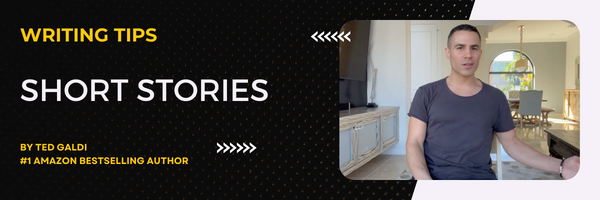
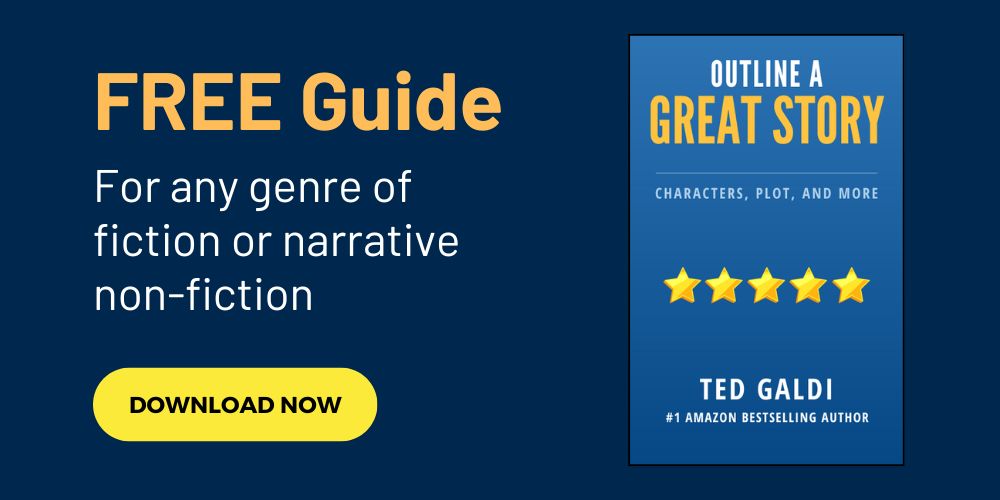
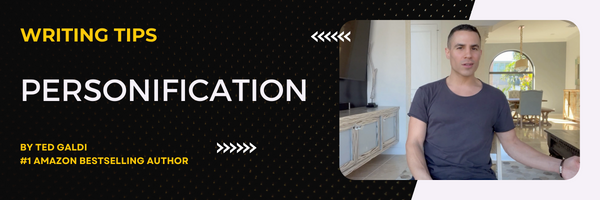
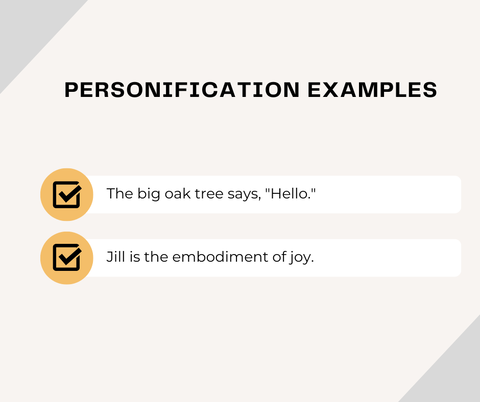
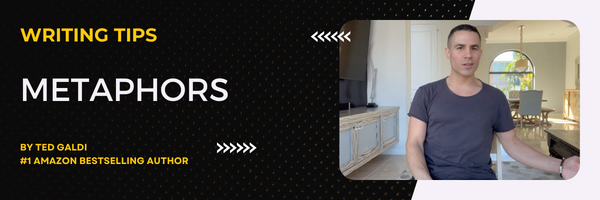
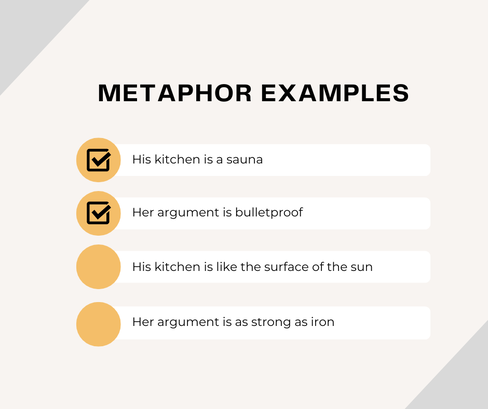
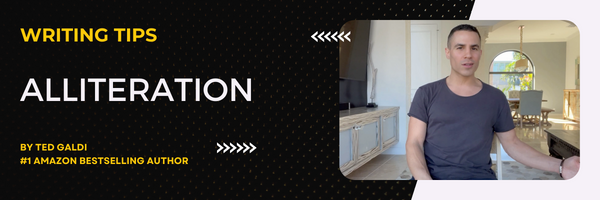
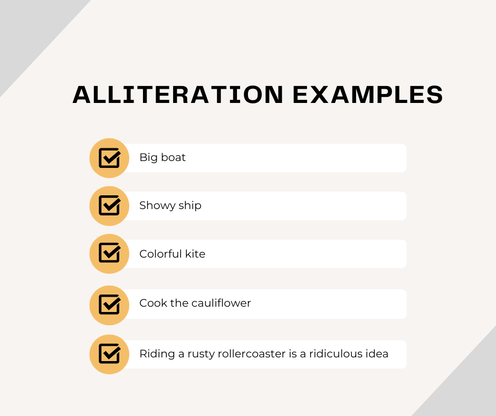
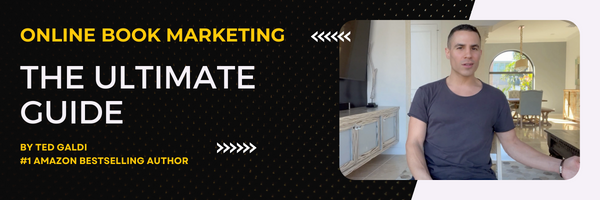





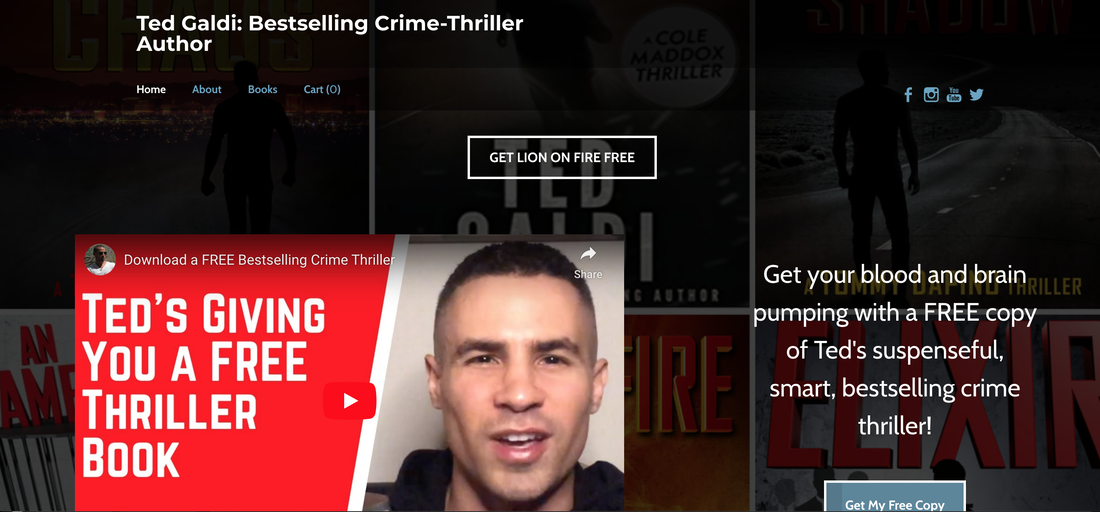

 RSS Feed
RSS Feed